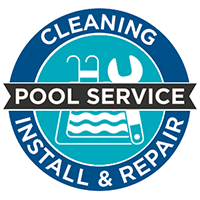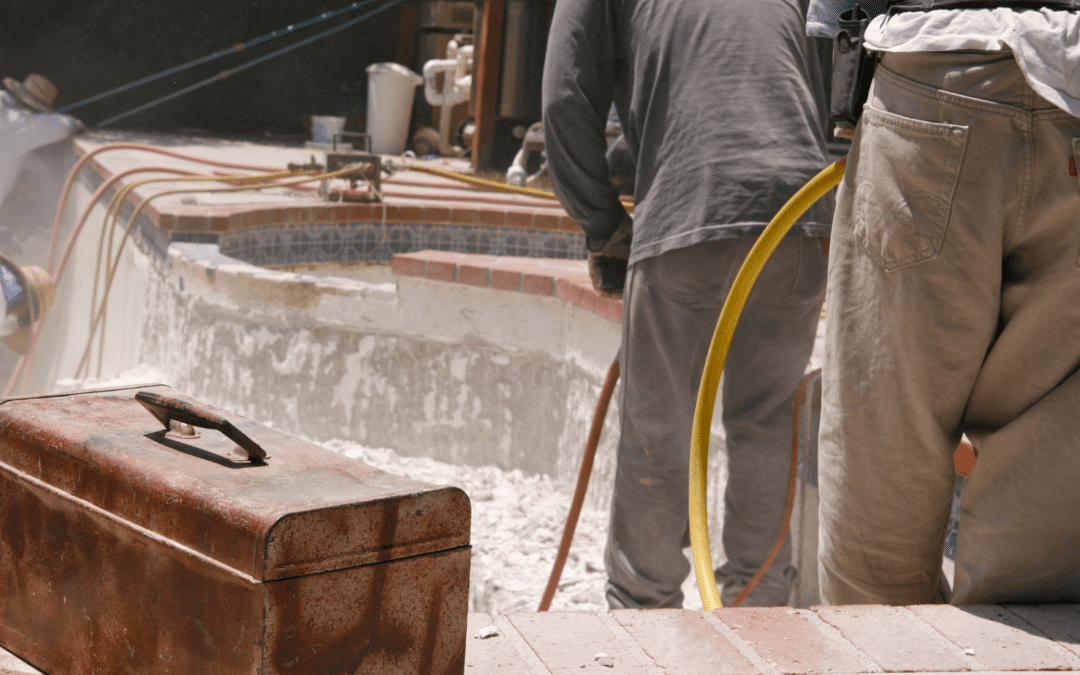Gunite or concrete pools are constructed with a rebar framework sprayed with a definite and sand combination. It is incredibly resistant. Therefore, swimming pools built with this material are built to last. The diversity of gunite swimming pools extends beyond the ability to produce an infinite number of shapes. As gunite swimming pools age, they will start to show signs of discolorations, stains, cracks, or a rough, uneven surface which will soon cause leakage. We prepared a list of gunite pool repair solutions that will help you fix your gunite pool.
Common Issues With Gunite Pools
Before we look at how to fix your gunite pool, it’s necessary to understand the most common problems with concrete swimming pools. Gunite pools, like any other type of pool, have their own set of issues.
Rough Surface
Concrete pool surfaces are rougher than fiberglass and vinyl pool surfaces, but not excessively. A concrete pool’s rough pool surface nonetheless provides a decent balance of slip resistance and comfort.
However, the surface might become highly rough due to rising pH, severe crazing, delamination, or unfavorable environmental conditions. This results in problems such as pitting and calcium nodules.
Surface Cracks
These cracks are pretty simple to repair. Surface cracks do not usually create leaks, but you should watch them see if they develop over time. They can impact the general structure of your swimming pool if they grow in the future. This is common on a newly constructed gunite pool.
Structural Cracks
These cracks are more demanding and harmful than surface cracks. Structural damages can form anywhere on the concrete pool and can cause significant leakage. Avoid them if you don’t want your pool repair process to be more complicated or perhaps to end without a solution.
Discoloration
Concrete is a porous material that quickly absorbs stains. Pool discoloration is a minor concrete pool issue, but it may be highly inconvenient for you. In addition, the discoloration can be caused by a chemical imbalance in your pool water and lead to surface cracks.
Test the pH of your swimming pool and maintain that water chemistry to avoid crack repair due to pool discoloration.
Plaster Flaking Off
This is also known as spalling. The plaster’s purpose is to protect the swimming pool structure. If there is a crack, the most common cause is a lack of calcium or chlorine—Sand the area to give a smoother surface and repair the plaster crack. If you want to avoid spalling, you should make repairs on time and keep the chemical levels in your concrete pool balanced.
Plumbing Leaks
To repair plumbing leaks in a concrete pool, you must first rip out the section where the water is leaking, which could be at the concrete or the patio.
One method of preventing leaks is to pressure test the piping and ensure that it is firmly placed. However, if the pool or patio moves, a leak may occur.
Pool Lifting/Floating from Ground
Water pushing upwards, or hydrostatic pressure, is the cause of concrete pools lifting from the ground. If you want to avoid this problem, you should keep the hydrostatic pool valve in good working order.
What You Need To Know: Gunite Pool Repair
There are several repair methods out there for repairing a gunite pool. So the process that you will need to use depends on what problem your pool has.
Here are some standard methods for gunite pool repairs:
Replastering
Replastering is the process of applying a new layer of cement to the whole interior surface of an existing plastered concrete pool. It is constructive for pool issues like rough pool surfaces, flaking plaster, and cracked surfaces.
Acid Washing
For rough concrete swimming pool surfaces, most pool owners recommend acid wash. It is effective at removing stains caused by chlorine, minerals, algae, and plain dirt. However, we recommend that you maintain your pool regularly to avoid having to acid wash it.
Plumbing
Polyvinyl Chloride replacement or installation is part of plumbing repairs. It is a time-consuming process, but you may do it on your own. Just make sure you have the right tools for the job.
Pool Shell Cracks
Deeper cracks require more extensive repairs than a plaster pool surface. Pool repair professionals use a drill or grinder to enlarge the gap before filling it. The next step is to clean the crack before filling it with pool plaster thoroughly. Finally, they cover the damage with a plastic cover after they have repaired it.
Filling the crack with a specific epoxy sealer is another typical crack repair technique. The filler is ejected into the gap at high pressure, filling the aperture all the way through rather than just sealing off the surface.
Pool Inspection
If you don’t want any cracks in your concrete swimming pools, this is the best technique for you. Detecting structural or surface cracks on time will save you money in the long run, and the repair process will be more straightforward. In addition, discoloration inspection is essential for improving the surface and pump functionality.
Get Your Gunite Swimming Pool Fixed ASAP!

Gunite Pool Repair – Clear Water Pools GA
Gunite pools are a great choice as they are pretty durable and offer endless design options. However, keep in mind that it is quite probable that your gunite pool will break someday if it is old.
There are many tips we have provided that you can use for Gunite Pool repair and swimming pool leakage solutions, but if your leak is particularly difficult, contact us and our team of experts will do the work for you. You wouldn’t be able to fix it all on your own anyway!





